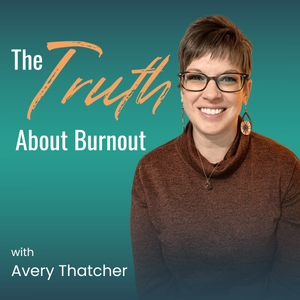
Bridging the Generation Gap: Burnout Trends and Strategies for Unified Workforce Well-being
The Truth About Burnout02/19/24 • 15 min
I often get asked if burnout is more prevalent now that it has been in the past. The truth? It depends on how you look at it.
Answering this question isn’t as simple as looking at the data and saying “yes” or “no”. There are many contributory factors for burnout that have evolved over time, but there are also changes in our society and the expectations we have for each other. There’s also changes in how we’re raised, the circumstances we’re living in, and how our world is being built to support us...or not.
This leads to a really important discussion about how the year we’re born can impact our risk and experience of burnout. No, I’m not talking about some woo-woo astrological something or other - I’m talking about generation gaps.
Generation Gap and Burnout Rates
To truly understand the dynamics at play, let’s first dissect the generational gap and its impact on burnout rates. For each generation, from Baby Boomers to Gen Z, there’s a unique set of values, expectations, communications styles and all of these things are important for us to consider when we’re looking at burnout.
In the proverbial melting pot of today’s workplaces and homes, these can easily lead to misunderstandings, imbalances in expectations, and misalignment with values that can not just contribute to a higher risk of burnout, but can also make burnout worse.
To analyze the impact of the generation gap on burnout, it's crucial to identify the generations we are referring to. In today's workforce, we often talk about four main generations:
Baby Boomers: Born between 1946 and 1964.
Generation X: Born between 1965 and 1980.
Millennials: Born between 1981 and 1996.
Generation Z: Born between 1997 and 2012.
Each generation brings its own set of values, expectations, and experiences to the workplace, which can influence how they perceive and cope with burnout.
Baby Boomers:
Baby Boomers have often been associated with a strong work ethic and a commitment to their careers. They grew up in an era where job stability and loyalty were highly valued. For them, burnout may stem from a sense of obligation to their jobs, leading to overwork and neglecting self-care. Baby Boomers may be more inclined to tough it out and resist seeking help for burnout because they grew up in an environment highly focused on self-efficacy and this means that if you’re burning out, it’s your fault and that you’ve done something wrong or you haven’t done enough. Rather than ask for help, advocate for themselves or delegate, Boomers might rely on their experience and problem-solving skills to manage workplace stress.
Also, Baby Boomers grew up in a post-war era and often experienced high expectations for success due to the economic stability of their formative years. There was a cultural emphasis on achieving the "American Dream," which could lead to a strong work ethic and dedication to career success. Hard work was equated - at least on a society level - to prosperity, wealth and success - and a lot of countries around the world adopted this “American Dream” style model as a way to pull yourself up by your bootstraps. This rarely talked about work-life balance and was more about work and how you supported yourself outside of work to be able to work more.
Loyalty to employers was a common trait among Baby Boomers. Many grew up in an era where long-term employment with a single company was the norm, and this loyalty could contribute to a sense of obligation to stay committed to their jobs even in the face of burnout. And finally, Baby Boomers often grew up in a time of traditional gender roles, where societal expectations for men and women in the workplace and at home were clearly defined. Balancing work and family life within these expectations could contribute to burnout, particularly for those trying to meet both societal and familial obligations.
Generation X:
Generation X came of age during periods of economic uncertainty, including the oil crisis and economic recessions in the 1970s and early 1980s. Job insecurity and a highly competitive job market could have contributed to stress and burnout. When everyone feels undervalued and replaceable - one way to maintain your job is to prove that they’d have to hire two or three people to replace you when you left because of how hard you worked.
Also, Gen X witnessed the advent of personal computers, the internet, and other technological advancements. While these changes brought increased efficiency, they also introduced new challenges, such as adapting to rapidly evolving technology and the blurring of lines between work and personal life.
Many Gen Xers were known as the "Latchkey Generation" because they often came home to empty houses after school while their parents were working to navigate the economic instability of the time. This independence fostere...
02/19/24 • 15 min
Generate a badge
Get a badge for your website that links back to this episode
<a href="https://goodpods.com/podcasts/the-truth-about-burnout-504443/bridging-the-generation-gap-burnout-trends-and-strategies-for-unified-66386664"> <img src="https://storage.googleapis.com/goodpods-images-bucket/badges/generic-badge-1.svg" alt="listen to bridging the generation gap: burnout trends and strategies for unified workforce well-being on goodpods" style="width: 225px" /> </a>
Copy